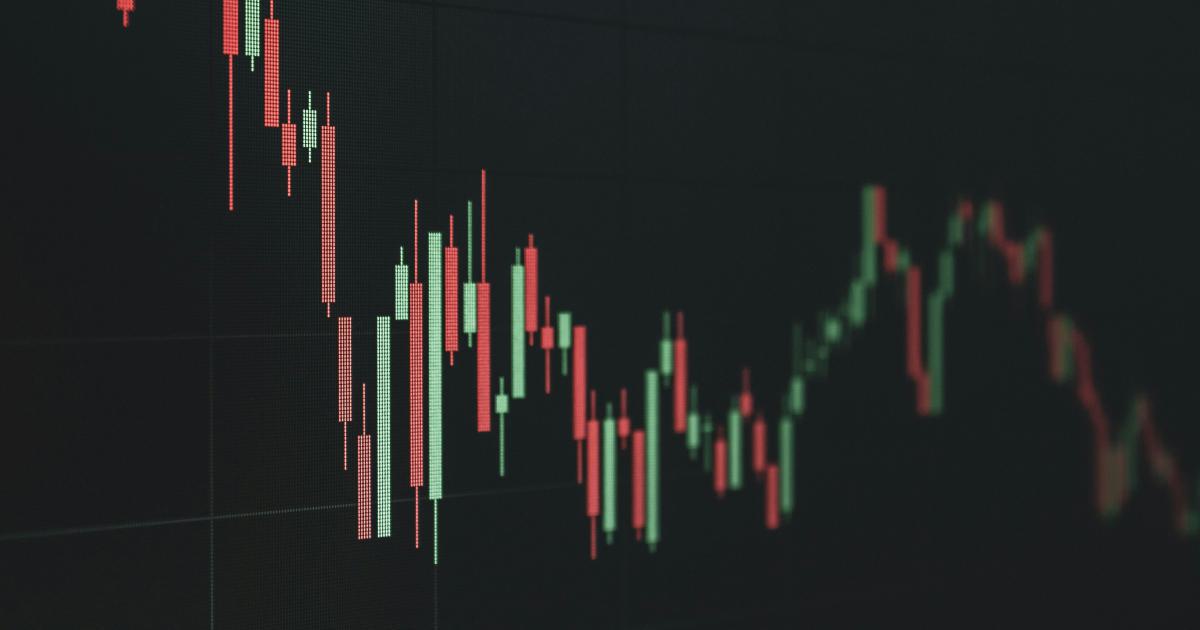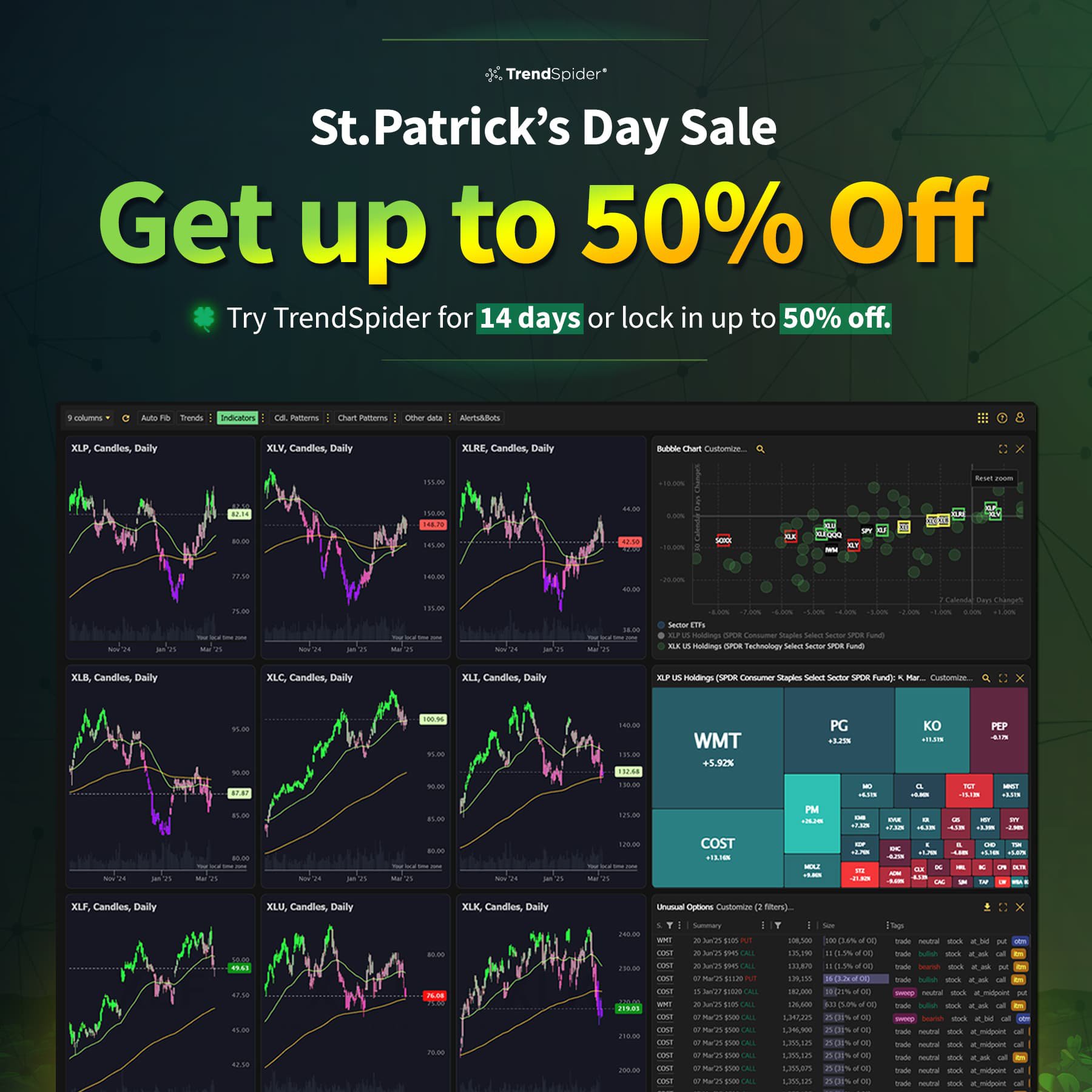How to Build Quantitative Trading Strategies for Beginners

Building quantitative trading strategies can be an exciting way to leverage data and technology for making smarter investment decisions. In this article, we'll explore how to build quantitative trading strategies from scratch, revealing the basic principles, processes, and tools required to develop algorithmic trading systems. Whether you are new to financial markets or have some experience with trading, this comprehensive guide will provide deep insight into the art and science of quantitative trading.
Introduction to Quantitative Trading
Quantitative trading involves the use of mathematical models, statistical analyses, and computer algorithms to identify trading opportunities in financial markets. This approach replaces emotion and intuition with systematic, data-driven decisions. By harnessing historical data and advanced computational methods, traders can construct models to forecast future price movements and execute trades automatically.
What is Quantitative Trading?
Quantitative trading is characterized by its reliance on quantitative analysis and computational power. Instead of relying solely on traditional fundamental or technical analysis, quantitative traders use various statistical methods to analyze large datasets. These analyses can include examining price histories, volume data, and even news sentiment to design profitable strategies. The primary goal is to build robust trading algorithms that can adapt to dynamic market conditions.
Benefits of Quantitative Trading
- Objectivity: By using mathematical models, traders can remove emotional biases from the decision-making process.
- Speed: Automated systems enable rapid execution of trades, ensuring that opportunities are seized in real time.
- Efficiency: Leveraging computer algorithms allows for scanning multiple markets and assets simultaneously.
- Risk Management: Quantitative methods enable precise control over risk, as robust models can incorporate risk limits and stop-loss triggers.
Challenges in the Quantitative Approach
While quantitative trading offers many advantages, it is not without its challenges. Some common challenges include:
- Data quality and availability
- Overfitting of models
- Implementation and latency issues
- Changing market dynamics that can render historically successful strategies obsolete
Understanding both the benefits and the challenges of quantitative trading is crucial for building effective and sustainable trading strategies.
Fundamental Concepts in Quantitative Trading
To effectively build quantitative trading strategies, it’s essential to understand the core concepts that underpin this trading approach.
Statistical and Mathematical Foundations
Quantitative trading relies on statistical theories and mathematical models. Familiarity with concepts like regression analysis, probability distributions, and time-series analysis is vital.
- Regression Analysis: Used to predict values and relationships between dependent and independent variables.
- Time-Series Analysis: Focuses on studying data points collected sequentially over time, which is essential for predicting market trends.
- Probability Theory: Helps in assessing the likelihood of different outcomes, critical for risk management and strategy development.
Algorithmic Trading
Algorithmic trading refers to the use of computer algorithms to execute trades based on predetermined criteria. This reduces the manual effort involved in trading, increases precision, and can lead to better execution speeds.
Data-Driven Decision Making
Data is at the heart of quantitative trading. Collecting, cleaning, and analyzing historical data forms the basis of any quantitative strategy. Moreover, the more diversified the data sources—ranging from price, volume, economic indicators to even alternative data—the more robust the resulting trading model can be.
Tools and Technologies for Quantitative Trading
A successful quantitative trading setup relies on powerful tools and technologies. Below, we explore some of the most commonly used tools by quant traders.
Programming Languages and Environments
Coding is a vital skill in quantitative trading. Here are some common programming languages and environments:
- Python: Favoured for its simplicity and the vast array of libraries available for data analysis (pandas, NumPy, SciPy) and machine learning (scikit-learn, TensorFlow).
- R: Excellent for statistical analysis and visualization.
- MATLAB: Widely used in academic research and industry, especially for numerical computing.
Trading Platforms and APIs
Modern trading strategies often involve connecting to brokers or exchanges directly via APIs. This allows for real-time data feeds and trade execution. Some popular platforms include:
- Interactive Brokers
- Alpaca
- QuantConnect
Data Sources
Quality data is paramount. Data sources may include:
- Stock market data (historical and real-time)
- Economic indicators
- Alternative data (social media sentiment, satellite data)
Proper data management and storage solutions are also essential for an efficient trading system. Whether it is cloud-based storage or in-house servers, ensuring fast and reliable access to data can significantly impact the success of your strategies.

Steps to Build Quantitative Trading Strategies
Building quantitative trading strategies involves several structured steps. Each step needs meticulous planning, testing, and iteration.
1. Defining Objectives and Strategy Concept
Before diving into quantitative trading, it is critical to define clear objectives. Ask yourself:
- What markets do I want to trade?
- What time frame will my strategy focus on (e.g., intraday, daily, weekly)?
- What is my risk tolerance?
- What kind of return am I targeting?
Creating a strategy concept involves brainstorming ideas based on market behaviors, historical trends, or even innovative indicators that you believe sufficiently capture market movements.
2. Data Collection and Preparation
Next comes data collection, an essential component in order to build quantitative trading strategies that work reliably. Reliable and clean data is the backbone of any quantitative model. Steps in data collection include:
- Identifying reputable data sources.
- Downloading and storing historical data.
- Cleaning the data by handling missing values, outliers, and formatting issues.
- Normalizing or transforming the data as required for analysis.
Data visualization tools can help to inspect data quality. Visualization also aids traders in spotting trends or anomalies that require closer examination.
3. Exploratory Data Analysis (EDA)
Exploratory Data Analysis (EDA) is crucial for understanding the patterns, relationships, and anomalies in the dataset. Through EDA, you may uncover:
- Trends: Identify consistent movements or seasonal trends.
- Correlations: Explore how different variables interact with one another.
- Volatility: Understand patterns of volatility that could impact trading decisions.
Performing statistical tests can further validate the patterns observed during EDA and help in refining your strategy hypothesis.
4. Strategy Formulation and Hypothesis Testing
At this stage, the focus shifts to algorithm development. Based on the insights from your data analysis, form a hypothesis for a trading strategy. This should include:
- Defining buy and sell signals.
- Establishing entry and exit criteria.
- Incorporating risk management rules such as stop-loss mechanisms.
Ensure that the hypothesis is well-documented and that you have a clear plan for how to implement and test it. The strategy should be quantifiable, allowing for easy evaluation of performance metrics like Sharpe ratios, maximum drawdowns, and win/loss ratios.
How to Build Quantitative Trading Strategies
One common approach to build quantitative trading strategies is to combine technical indicators with statistical methods. For example, a basic moving average crossover strategy can be enhanced by optimizing the parameters through historical backtesting. By analyzing various combinations of short-term and long-term moving averages, you can determine which combination historically offers the best risk-adjusted returns.
5. Backtesting the Strategy
Backtesting involves simulating your trading strategy using historical market data to evaluate its performance. When backtesting, consider the following:
- Use high-quality historical data to avoid data-snooping biases.
- Divide the data into training and testing sets to validate the robustness of the strategy.
- Account for transaction costs, slippage, and latency.
- Perform walk-forward analysis to assess how the strategy performs over different market regimes.
A detailed analysis of backtesting results can help in adjusting or refining the strategy before live deployment.
6. Optimization and Parameter Tuning
Once a strategy is backtested, the next step is optimizing its parameters. This involves:
- Fine-tuning the algorithm to achieve the best performance.
- Testing across multiple market conditions to ensure consistency.
- Avoiding the pitfalls of overfitting, where the strategy performs very well on historical data but fails in live markets.
Parameter tuning should be conducted carefully, often using machine learning techniques to iteratively improve model performance without compromising the model’s generalizability.
7. Implementation and Execution
After thorough backtesting and optimization, it is time to implement the strategy in a live trading environment. Key considerations in this stage include:
- Choosing a reliable brokerage platform with low latency.
- Automating the strategy using appropriate trading software.
- Setting up real-time monitoring systems for trade execution, risk management, and performance tracking.
Robust testing in a simulated or paper trading environment is critical before live execution. This transition helps to iron out any technical issues or market conditions that simulations may not fully capture.
8. Monitoring, Maintenance, and Continuous Improvement
The world of trading is dynamic, and strategies need regular updates and maintenance. A systematic approach to monitor the strategy includes:
- Tracking live trade performance and comparing it with backtest results.
- Incorporating market feedback to refine strategy parameters.
- Regular updates to data and renewing algorithms based on the latest market trends.
Continuous learning and optimization can mean the difference between success and failure in quantitative trading.
Essential Software and Tools for Quantitative Strategy Development
When looking to build quantitative trading strategies, having the right set of tools is as important as the strategy itself. The technological environment provides various software solutions to facilitate data analysis, algorithm design, and live trade execution.
Integrated Development Environments (IDEs) and Libraries
- Jupyter Notebook: A popular tool for interactive coding and data visualization. It is well-suited for exploratory data science.
- Visual Studio Code: Offers robust extensions for Python and other languages, aiding in strategy development and debugging.
These environments support numerous libraries that simplify advanced computations and data manipulations.
Backtesting and Simulation Tools
Several platforms offer built-in backtesting and simulation environments:
- Backtrader: An open-source framework in Python that allows for testing and executing trading algorithms.
- QuantConnect: Provides a cloud-based platform for backtesting and live trading with support for multiple asset classes.
- Zipline: An open-source library developed by Quantopian, designed specifically for algorithmic trading backtests.
These tools assist in verifying strategy robustness and performance, while also offering integration with brokerage APIs for eventual strategy implementation.

Real-World Example: Developing a Mean Reversion Strategy
To illustrate the process, consider a mean reversion strategy—a popular quantitative trading method that assumes prices will revert to their historical mean over time.
Concept and Hypothesis
Mean reversion strategies are built on the premise that asset prices, after deviating significantly from their average, will tend to return to that average. The hypothesis here is that when an asset's price moves far from its moving average, there is a high probability of a reversal.
Key Steps:
Identify the moving average over a specific period (e.g., 50-day or 200-day).
Define thresholds for deviations, such as a standard deviation range.
Establish buy signals when prices dip significantly below the moving average and sell signals when prices exceed it.
Data Analysis and Signal Generation
Gather historical price data and compute the moving averages alongside the asset’s volatility. Next, generate signals based on criteria such as:
- If the asset's price falls more than one standard deviation below the moving average, signal a buy.
- Conversely, if the price rises more than one standard deviation above the moving average, signal a sell.
By running these conditions on historical data, you can determine the frequency and profitability of trades.
Backtesting and Optimization
Backtesting the mean reversion strategy involves simulating the generated signals over several market cycles. Evaluate performance using statistical metrics such as:
- Annualized returns
- Maximum drawdown
- Sharpe ratio
Adjust the parameters (e.g., moving average period, deviation threshold) iteratively to achieve an optimized strategy that is resilient against different market conditions.
Implementation and Live Trading Considerations
When transitioning from backtesting to live trading:
- Utilize a robust trading platform with low latency.
- Automate signal execution to minimize human error.
- Continue to monitor and refine the strategy as live market conditions unfold.
This case study provides a framework for building quantitative trading strategies that are data-driven and resilient in volatile markets.
Risk Management and Strategy Optimization
Effective risk management is paramount in quantitative trading. No matter how robust a strategy may seem, unforeseen market changes can result in unexpected losses.
Key Risk Management Techniques
Stop-Loss Orders: Automatically exit trades when losses reach predefined thresholds.
Diversification: Spread investments across various assets or markets to mitigate the risk inherent in any single asset.
Position Sizing: Allocate a specific percentage of total capital to each trade, reducing exposure to any one position.
Risk management also involves continuous monitoring of market conditions and strategy performance. Adjusting exposure based on volatility or emerging trends can help reduce potential drawdowns.
Strategy Robustness and Regression Testing
To further strengthen quantitative trading strategies:
- Regression Testing: Regularly re-evaluate models with updated data to ensure the strategy remains effective.
- Stress Testing: Simulate worst-case scenarios to assess how the strategy performs under adverse market conditions.
- Scenario Analysis: Consider multiple market environments (bullish, bearish, and sideways markets) to validate that your approach holds up under different conditions.
Incorporating Machine Learning
Machine learning models can add a powerful layer to quantitative trading strategies. Through supervised or unsupervised learning, algorithms can adapt to changing market conditions. Common techniques include:
- Classification Algorithms: To predict price movements.
- Clustering: To classify different market environments.
- Neural Networks: To extract non-linear relationships from complex data sets.
Employing machine learning requires careful parameter tuning and validation to ensure that the models do not become overfitted to historical data.
Common Pitfalls and How to Avoid Them
Despite the systematic nature of quantitative trading, several pitfalls can derail even the best strategies. Awareness and proactive mitigation of these risks are crucial for longevity in the market.
Overfitting
Overfitting occurs when a model is overly tailored to historical data, resulting in poor performance when applied to new, unseen data. To avoid overfitting:
- Use cross-validation techniques.
- Reserve separate data sets for training and testing.
- Regularly update models with new data.
Data Quality Issues
The reliability of quantitative trading strategies depends on the quality of the data. Ensure that data is:
- Cleaned: Remove errors, duplicates, or outlier values.
- Verified: Utilize multiple data sources to confirm accuracy.
- Timely: Ensure real-time data feeds function without delays.
Execution and Latency
Technical issues such as latency in trade execution can adversely impact strategy effectiveness. To mitigate this:
- Choose reputable brokerage platforms known for low latency.
- Ensure high-speed internet and robust hardware.
- Optimize the code for performance, especially in high-frequency trading environments.
Market Regime Shifts
Markets evolve, and strategies that once were effective might become obsolete. Continuous monitoring and adaptability are key. Always be prepared to tweak or even overhaul strategies as market dynamics change.
Future Trends in Quantitative Trading
As technology evolves, so does the landscape of quantitative trading. Here are some trends that are shaping the future:
Increased Use of Artificial Intelligence (AI) and Machine Learning
Advances in AI are revolutionizing the way trading strategies are developed and executed. Deep learning models, natural language processing for sentiment analysis, and reinforcement learning for strategy optimization are becoming more prevalent.
Integration of Alternative Data
The inclusion of alternative data sources like social media trends, satellite imagery, and even weather patterns is creating more comprehensive models. This broadens the spectrum of analysis and opens new avenues for market prediction.
Cloud Computing and Big Data
With the increasing availability of cloud computing, handling vast amounts of data has become more feasible and cost-effective. This not only improves the backtesting capabilities but also enables real-time processing and execution of complex strategies.
Regulatory and Ethical Considerations
As algorithmic trading becomes more widespread, regulators are paying closer attention. Future strategies will need to consider compliance aspects and ethical trading practices. Traders should stay informed about evolving regulations to ensure that their strategies remain compliant.

Conclusion
Building quantitative trading strategies requires a strong foundation in statistical analysis, programming, and market dynamics. This article outlined the essential steps from setting objectives and data collection, to backtesting, optimization, and live deployment—underscoring actionable solutions, real-world examples, and risk management best practices.
To succeed in quantitative trading, it is crucial to continuously learn and adapt. The markets constantly evolve, and so must your strategies and tools. Remember, the journey to build quantitative trading strategies is as significant as the destination. Whether you begin with simple models or eventually embrace sophisticated machine learning algorithms, the key is to remain disciplined and data-driven.
In summary, the process to build quantitative trading strategies for beginners can be broken down into clear steps: from understanding the fundamentals and gathering high-quality data to rigorous testing and effective risk management. With the right approach and continuous refinement, you can leverage quantitative methods to navigate the complexities of financial markets and potentially achieve more reliable trading outcomes.
Keep exploring, testing, and learning as you refine your strategies, and remember that in the world of quantitative trading, the journey of continuous improvement is the key to long-term success.
Unlock Trading Potential with Automated Analysis
Tired of missing opportunities and making suboptimal trading decisions? TrendSpider's cutting-edge platform automates complex technical analysis, saving you time and reducing human error.
With multi-timeframe analysis, dynamic alerts, backtesting, and customizable charting, you'll gain a competitive edge in identifying trends and making informed trades across global markets.
Unleash the Power of Automated Trading Analysis
Are you struggling to keep up with the fast-paced trading world? TrendSpider empowers you with cutting-edge tools for optimal strategy execution.
Our automated technical analysis suite eliminates guesswork, backtests strategies, and delivers real-time alerts, saving you valuable time and effort.


